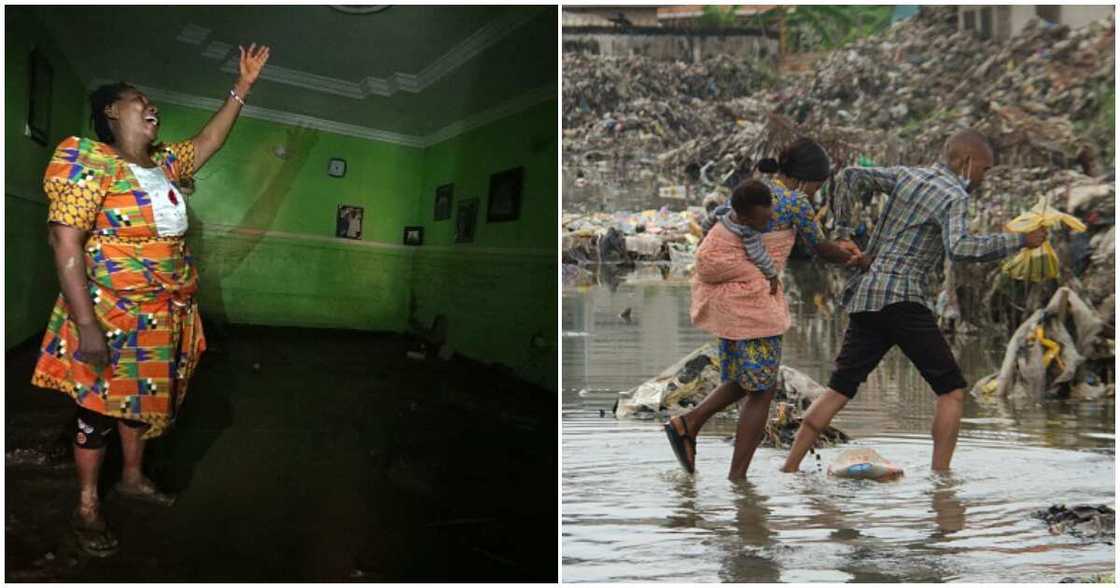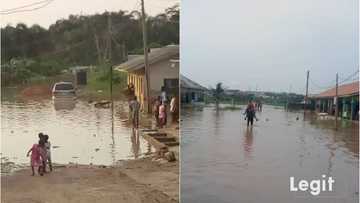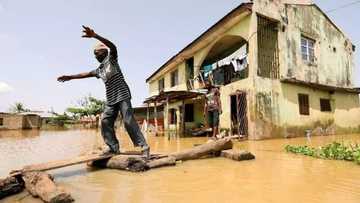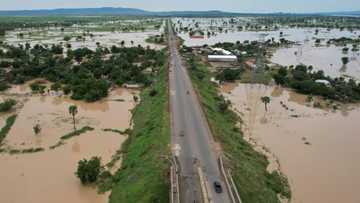Maintain Proper Water Runoffs: 4 Steps Nigerians Can Take to Prevent Home Flooding in 2022 in Any Place
- About 22 states of the federation, including the nation's capital, Abuja have been affected by floods since January 2022
- There are however steps unaffected Nigerians can take to prevent flooding in their homes irrespective of where they may be situated
- Densely populated areas or communities near rivers, dams or mountains run a high risk of experiencing a flood
The current flood problem ravaging many states in the country has left destruction, loss and death in its path.
In a report by Channels TV, the National Emergency Management Agency (NEMA) posits that the 2022 flooding has taken 300 lives so far, with experts fearing that food prices in the country may increase.

Source: Getty Images
This is as heavy floods have destroyed farmlands in states like Benue and Kogi. Infact, about 22 states have been affected and more to come if preventive measures are not taken.

Read also
As flood ravages 34 states in Nigeria, UNICEF gives details of children affected, way forward
Against the backdrop of these challenges, this article will explain four steps Nigerians can employ to prevent flood outside the house.
PAY ATTENTION: Сheck out news that is picked exactly for YOU ➡️ find the “Recommended for you” block on the home page and enjoy!
It is noteworthy that these steps are some of the recommendations released by the US Federal Emergency Management Agency (FEMA) as reported by Business Insider.
1. Install a rain barrel
Installing a rain barrel is a proven way to stop floods from getting into one's house. The work of the rain barrel is to collect rainwater from the roof.
This will help reduce the amount of rainfall that flows in the compound and the collected water can be used for other things like watering plants, lawns and others.
2. Elevate utilities and service equipment
It is recommended that utilities and other service equipment should be at elevated positions in the house to guard against electro*cution and home damage.
Advisably, switches, sockets and electrical outlets should be at least one foot above the estimated flood elevation in one's area.
3. Anchor outdoor fuel tanks
Houses with fuel tanks should ensure it is channeled outside. This will prevent injury to people and damage to properties if it is carried by flood.
Outdoor fuel tanks should be attached to heavy items such as concrete slabs so that they don't leave their positions.
4. Maintain proper water runoffs and drainage
At this point, the importance of having cleared gutters and water runoffs can not be overemphasized.
This is because downspouts, gutters and splash pads prevent rainwater from getting into the house. So, they must be kept clean and fully operating.
Photo emerges of the dam causing flood in many Nigerian states
Meanwhile, Legit.ng previously reported about the dam that is responsible for the flood in many Nigerian states.

Read also
United States promises $1million for Nigeria’s flood victims, fear surge of waterborne diseases
In 1977, construction of the Lagdo Dam, located in Northern Cameroon began and was completed in 1982.
Initially, the Cameroonian and Nigerian governments had agreed to build two dams so that when excess water is released from the Cameronian Dam, it will be contained by the Nigerian dam which would be two and a half times bigger and won't result in flooding.
However, the Nigerian Government agreed to construct the Dasin Hausa Dam in Adamawa state to lessen the impact of any potential flooding from the Lagdo dam in Cameroon.
But regrettably, the Dasin Hausa dam has not been completed since 1982 and this has led to the yearly flooding in Nigeria.
Source: Legit.ng


